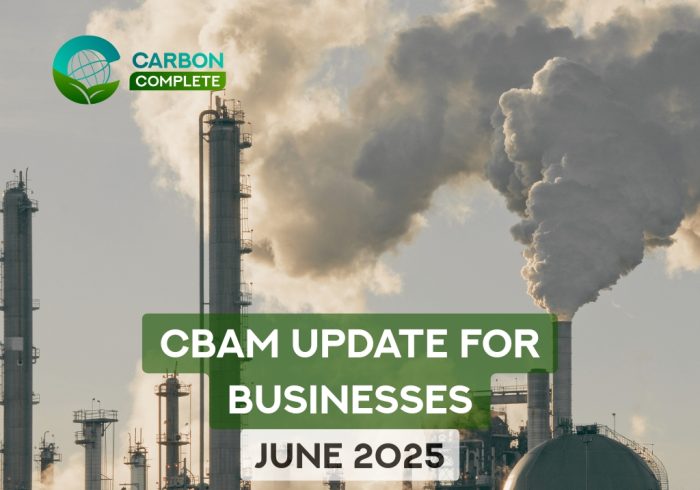Carbon Border Adjustment Mechanism (CBAM)
Simplification Agreement: June 2025
On 18 June 2025, the European Parliament and Council reached a provisional agreement to simplify and strengthen the EU Carbon Border Adjustment Mechanism (CBAM). This update is part of the broader Omnibus I package, aimed at reducing the regulatory burden for businesses while maintaining strong climate protection.
If your company imports goods into the EU, here’s what you need to know.

A New 50-Tonne Exemption Threshold
Under the revised regulation, companies importing less than 50 tonnes per year of CBAM-covered goods will be exempt from CBAM obligations.
This means:
- Around 90 percent of importers (mostly SMEs and individuals) will no longer have to report or purchase CBAM certificates
- Despite the exemption, 99 percent of embedded emissions in imported goods will still be covered, maintaining climate effectiveness
The new threshold marks a major adjustment in how the Carbon Border Adjustment Mechanism applies to smaller operators.
Simplified Compliance for Larger Importers
For those above the 50-tonne threshold, several compliance processes are being simplified:
- Authorisation: Fewer procedural steps to become an authorised CBAM declarant
- Emissions reporting: A move toward simplified data submissions
- Verification: More flexible methods for proving embedded emissions
These updates aim to reduce administrative work and reporting costs, particularly for companies that import regularly and in higher volumes. The simplified procedures are part of broader efforts to make the CBAM more workable without compromising environmental accountability.
Transition to the Definitive Phase of the Carbon Border Adjustment Mechanism
The definitive CBAM phase begins 1 January 2026.
To avoid delays, importers will be allowed to continue bringing CBAM goods into the EU while their CBAM registration is pending. This transitional measure ensures uninterrupted trade during the shift from the learning phase to the full Carbon Border Adjustment Mechanism structure.
Clearer Financial Liability and Carbon Price Claims
The revised regulation improves clarity on two key points:
- How importers calculate their financial liability over the course of the year
- How they can claim credit for carbon prices already paid in the country of origin
This aims to reduce the risk of double carbon pricing and provide a more transparent and fair process for globally operating businesses.
Clearer guidance in this area is a necessary foundation for the future extension of the Carbon Border Adjustment Mechanism to additional products and sectors.
What’s Next for the Carbon Border Adjustment Mechanism?
The agreement must now be formally adopted by the European Parliament and the Council. Once published in the Official Journal of the EU, it will enter into force 20 days later.
A broader review of the CBAM is planned for later in 2025, which could include:
- Extending the mechanism to downstream products
- Introducing anti-circumvention measures
- Developing approaches to address export-related carbon leakage
Need Help Preparing for the Carbon Border Adjustment Mechanism?
CBAM reporting will soon become a permanent part of EU import procedures.
If your company needs help with:
- EU & UK frameworks explained
- Emissions calculation and data collection
- Practical examples using your supply chain
- Team equipped to manage CBAM internally
- Full support with monitoring and reporting
- We draft and submit reports on your behalf
- Supplier data gathering and compliance checks
You can find more on our services here:
Services by Carbon Complete
At Carbon Complete, we continue to monitor regulatory updates and help businesses stay ahead of change.
